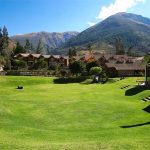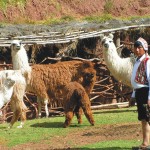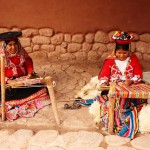Main Highlights: Sacred Valley, Pisac, and Ollantaytambo Full-Day Tour visiting: Awanacancha, Pisac, and Ollantaytambo. This full-day tour departs from Cusco and overnights either in Cusco, the Sacred Valley, or Machu Picchu Town.
Description: Discover the Sacred Valley of the Incas on this full-day excursion from Cusco. Our first stop will be at Awanacancha, a cultural center where one can learn about the Andean camelids such as alpacas and llamas, traditional dyeing and knitting techniques, as well as the most representative Andean crops. Then, we will continue to the picturesque town of Pisac where you can purchase beautifully crafted products hand-made by local artisans. On Sunday, the main attraction is a mass celebrated in Quechua and traditional music played with traditional musical instruments. Afterwards, a typical Peruvian lunch will be served at a local restaurant before visiting the fortress of Ollantaytambo and its main attraction, the Temple of the Sun. Built using massive stones, each one approximately 12 feet (3.5m) tall, this temple was used as a fortress during the time of the Inca civil war.
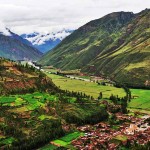
The Sacred Valley of the Incas stretches between Cusco, once the capital of the Inca Empire, and the legendary 15th-century city of
Machu Picchu. Encompassing what was the fertile homeland of the Inca Empire (1438 to 1533), today the transcendent region -also known as the Urubamba Valley- is a quiet expanse of country that is steeped in Andean history and culture. Many visitors to Peru pass through the region quickly, jumping between Cusco and Aguas Calientes, the base town where many bookend a visit to Machu Picchu. But spending time in the Sacred Valley’s collection of small towns and archaeological sites offers both a glimpse into daily Peruvian life as well as a full picture of the accomplishments and operation of the once-glorious Inca Empire.
Here, modernity and tradition are in equilibrium, with locals respectfully preserving their past, following many indigenous practices and observing centuries-old festivals and celebrations.

Awanacancha (or Awanakancha) is a weaving center with the goal to keep alive the traditional textile arts.
Here you can see four members of the cameloid family – llama, alpacas, vicunas and guanacos. Alapacas have thick wool and is the most commonly used while the vicunas are small and delicate with fur considered the finest.
You can meet these four cameloids, learn about the the harvesting of the different wools and the natural dying techniques and have a chance to see native weavers from different areas showing their different weaving styles and dress.
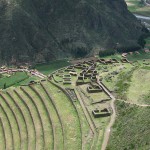
Pisac is located about 40km southeast of Urubamba and encompasses both a historic town and a striking Inca archaeological site, with a series of steep agricultural terraces and hilltop fortresses visible from the town’s central plaza. There are trails that lead over and through the terraces, tunnels, temples, tombs and ceremonial center, all engineered by the Incas for farming, worshipping and bathing. The Sun Gate, included in many of the Inca’s lofted towns, perfectly frames the setting sun during biannual solstices, as it has and will continue to do for centuries. The splendid views down and across the Urubamba Valley rival those of Machu Picchu, and unlike the iconic site, visitors often have hushed Pisac almost entirely to themselves. In downtown Pisac, one of the Sacred Valley’s largest fairs takes place daily, with Tuesdays, Thursdays and Sundays being the busiest. Vendors peddle handmade goods such as colorful woven knits and traditional Peruvian treats including grilled corn coated with cheese.
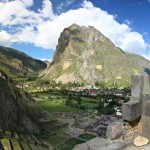
Once a country retreat for Inca royalty and nobility, Ollantaytambo is also where the Incas also fought some of their last battles, resisting Spanish conquest from the still intact fortress and staggered terraces rising up around the town. Climbing to the top of the village’s ceremonial center where Incas would worship yields panoramic views of the Sacred Valley, across the Patakancha and Urubamba Rivers. The gridded, cobble-stoned town streets are the product of Inca city planning, dating back to the 1200s. Babbling waterways, branching from the nearby rivers, feed the still-flowing irrigation system that the Incas designed, their handiwork admired to this day.

